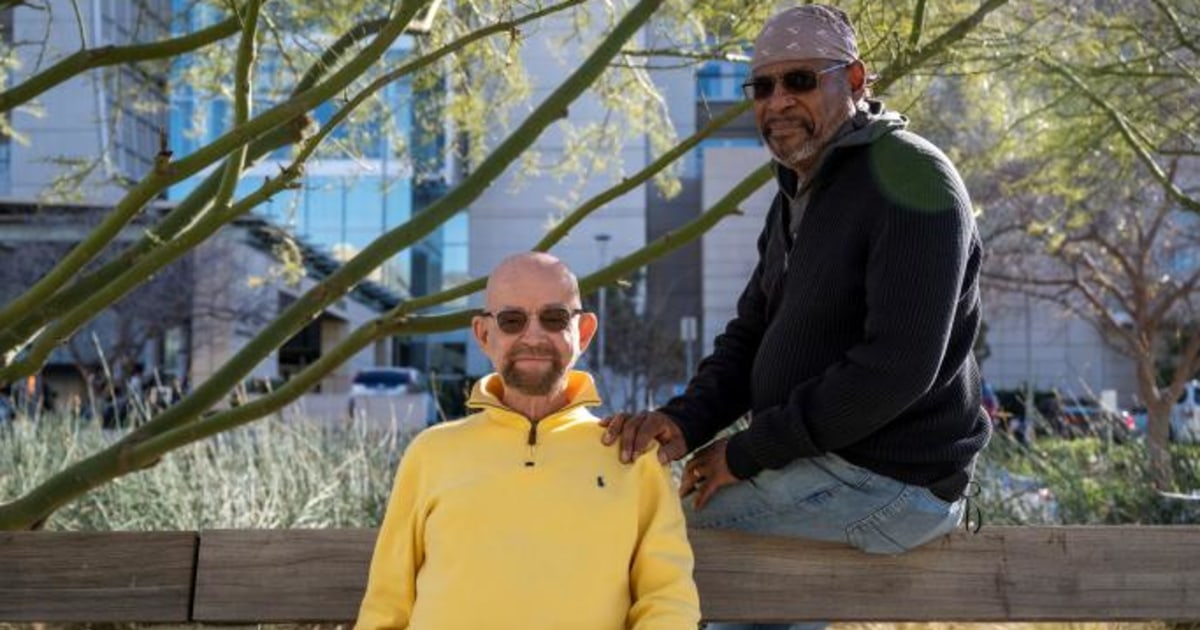More than four years ago, American Victoria Gray received a phone call that changed her life.
It was her hematologist, who offered to enter a clinical trial with an experimental drug.
Gray, 37, has sickle cell anemia, the world's most common genetic disease.
Every year about 300,000 babies are born with this condition caused by a mutation that makes red blood cells not round, but rather crescent-shaped.
These sharp blood cells get stuck in the vessels and cause crippling pain throughout the body, chronic damage to many organs, and a high risk of dying from a stroke.
Gray was given seven years to live at birth.
During pregnancy, the gene that controls the production of hemoglobin, the protein that carries oxygen through the blood, works perfectly.
But after birth, that gene is turned off and another one begins to work that will produce hemoglobin for the rest of life;
and it is that one that has the mutation that causes the disease.
In July 2019, Gray became the first patient to receive a new CRISPR-based gene-editing therapy for her disease.
This revolutionary technology invented in 2012 makes it possible to correct errors in the instruction book of 3,000 million letters of DNA that make up the genome of a human being.
The new treatment consisted of extracting blood stem cells from Gray's bone marrow, isolating them in the laboratory, and using CRISPR's molecular scissors to cut his genome right at the position of the BCL11A
gene
.
This is the switch that turns off fetal hemoglobin production after birth.
Automatically, the cells repaired the cut in the genome by joining its ends back together, but the gene had been disabled.
At this point the hardest part came: killing all the diseased blood cells in the bone marrow of the chemotherapy patient.
The doctors then transfused the woman with her own edited cells.
Within weeks, a new generation of red blood cells loaded with healthy fetal hemoglobin nestled and multiplied throughout her body.
Nearly four years later, Gray feels like he has a new life ahead of him.
"I no longer feel pain nor have they had to admit me to the hospital, when before it was my turn every few months."
For the first time, he finds himself capable of taking care of his four children without help and looking for a full-time job.
This week Gray went to explain his case at the III International Conference on Human Genome Editing, held in London.
Hundreds of experts in the field rose from his seats and gave him a standing ovation after his exciting speech.
“Thanks to my supercells”, he explained with an almost broken voice, “my life has changed completely”.
It is the closest thing to a cure that has been seen since this disease was discovered, 113 years ago.
Dozens of people in various countries have participated in clinical trials with this therapy, developed by the pharmaceutical companies Vertex and CRISPR Therapeutics.
And there are several similar ones on the way against sickle cell anemia and beta thalassemia, another blood ailment of genetic origin that condemns you to receive transfusions for life.
These drugs are expected to be approved in the United States this year and to arrive in Europe some time later.
very expensive drugs
These treatments will be among the most expensive in the world.
Its price will be around three million dollars – a similar amount in euros – to which must be added the cost of several months of hospital admission, transfusions, chemotherapy.
It is very doubtful that such a product will reach where more than 90% of sickle cell cases occur: Africa and India, with at least six million patients in total —although other estimates calculate more than 20 million.
For many generations, evolution has favored these as the most affected areas because the anemia mutation has one advantage: it reduces the risk of malaria.
Up to 80% of children with sickle cell disease in sub-Saharan Africa die within a few years of life.
And in the entire African continent, only three countries have the necessary infrastructure to apply these new therapies: Nigeria, Tanzania and South Africa.
It is also hard to see how these treatments will reach many patients in developed countries, especially those where there is no universal healthcare.
Gray, for example, fears for his future grandchildren, who could inherit the disease.
“I hope that these expensive therapies can be made more affordable to help people like me.
If not, what's the point of having developed them?” she explains.
The black population in the United States, descendants of African slaves, is the one that suffers the most from this anemia, with some 100,000 affected.
In Latin America there are 85,000, and in Europe, about 40,000.
Physician and Stanford University researcher Mathew Porteus was one of the first to show that gene editing corrects enough blood cells to cure sickle cell patients.
“This product has been tested in the United States and it has worked there, but it will probably have to be simplified, industrialized and the way of administration changed if we want to take it to other parts of the world,” he acknowledges.
His great hope is India, a country where the cost of other very expensive therapies in developed countries has been drastically reduced.
“India has all the technology needed to bring the price down,” he explains.
But Gautam Gondre, president of sickle cell patient associations in India, is highly skeptical.
Over the past 40 years, hydroxyurea has been shown to be the most effective treatment for relieving the symptoms of sickle cell anemia.
The monthly cost of this medicine is about 30 euros.
“If in my country my two children cannot access this drug, how are they going to have access to CRISPR therapy?” Gondre exclaimed during his intervention.
Alexis Thompson, of the Children's Hospital of Philadelphia, explained that gene-editing therapies for blood ailments are not without risk and have a serious side effect: infertility.
The data shows that the younger the patients, the better they seem to respond to treatment.
But chemotherapy often leaves them sterile.
Dan Bauer, from Boston Children's Hospital, another of the pioneers of these therapies, believes that more follow-up is needed before proclaiming that the disease has been cured.
The researcher explained that the available data show that there is a correction of 45% of the blood cells and that this is enough for the crises and pain characteristic of the disease to subside.
But until when?
Nobody knows.
The future of gene editing
For now, these therapies work well with genetic blood disorders, allowing stem cells to be harvested, edited in the lab, and checked to see if the defect has been corrected before injecting them into the patient.
This is not possible when the disease affects a solid organ.
That is one of the great objectives for gene editing in the future because it would greatly reduce its cost.
Attempts to cure a genetic liver disease with a direct injection of CRISPR have shown promising results against a rare disease of genetic origin.
The goal for the next few years is to manage to treat organs such as the heart and the brain or reduce bad cholesterol levels.
In addition, there are at least two new, much more versatile and precise gene-editing technologies that go beyond just cutting DNA with CRISPR.
Both have been developed by the laboratory of David Liu, from Harvard University, who also participated in the congress.
Base editing, which is already being tested in patients, allows one letter of DNA in the genome to be replaced by another, correcting mutations.
And beyond that goes quality editing (
prime editing
), which is being tested on animals and which allows longer sequences to be corrected without introducing additional errors.
During his speech, Liu was optimistic about these new technologies.
"After more than 70 years of scientific work, editing our genome is one of the most important capabilities that our species has achieved and can allow us to stop being condemned by the errors in our genome."
You can contact us at ndominguez@elpais.es, follow
MATERIA
on
,
and
, or sign up here to receive
our weekly newsletter
.


/cloudfront-eu-central-1.images.arcpublishing.com/prisa/ZV3HRONFCNGOLA37LDSKYTU2VY.jpg)


/cloudfront-eu-central-1.images.arcpublishing.com/prisa/MTOHBDDWPFDTPBEOJ4TEBMTRWA.jpg)



